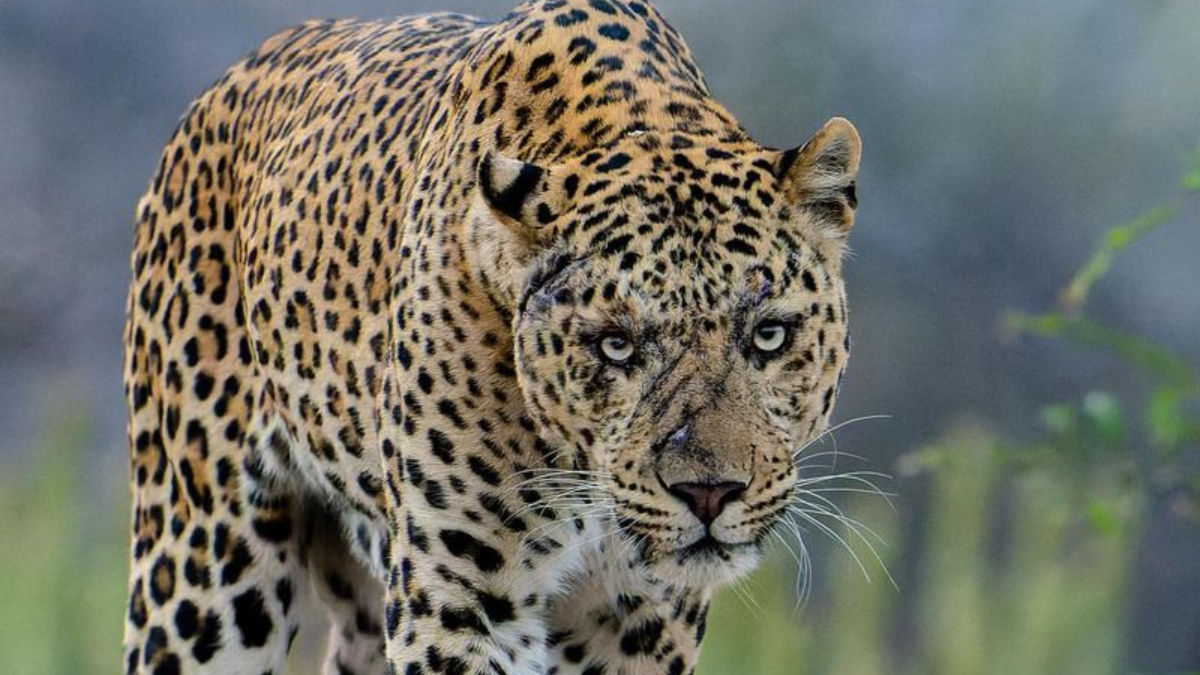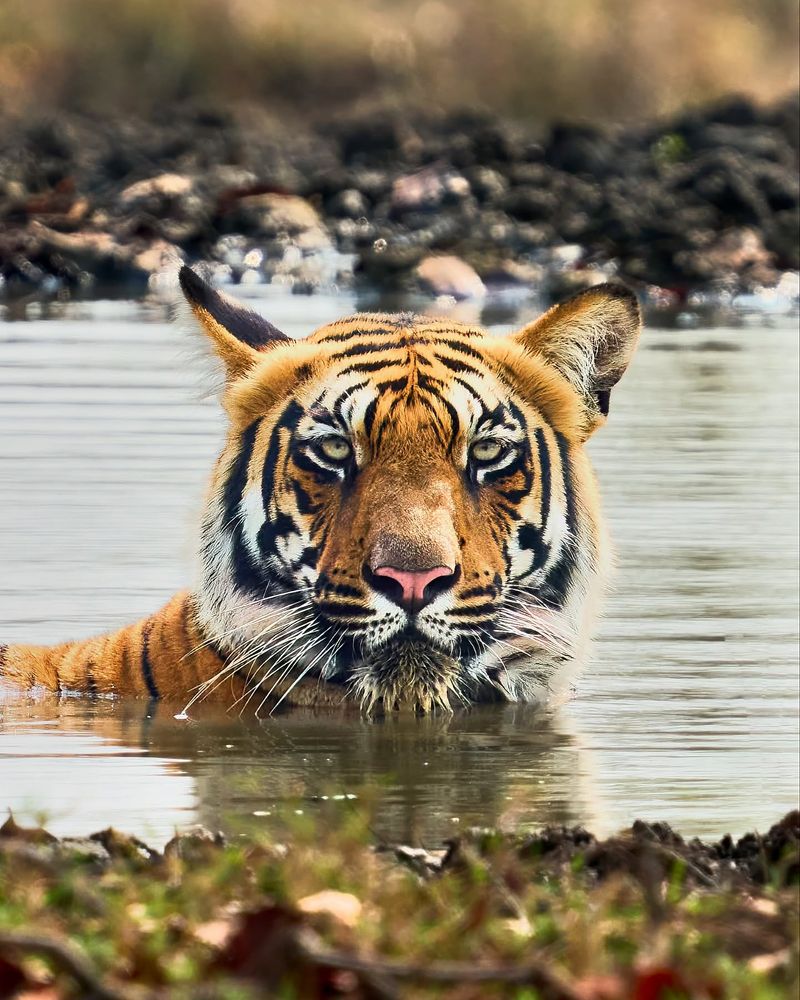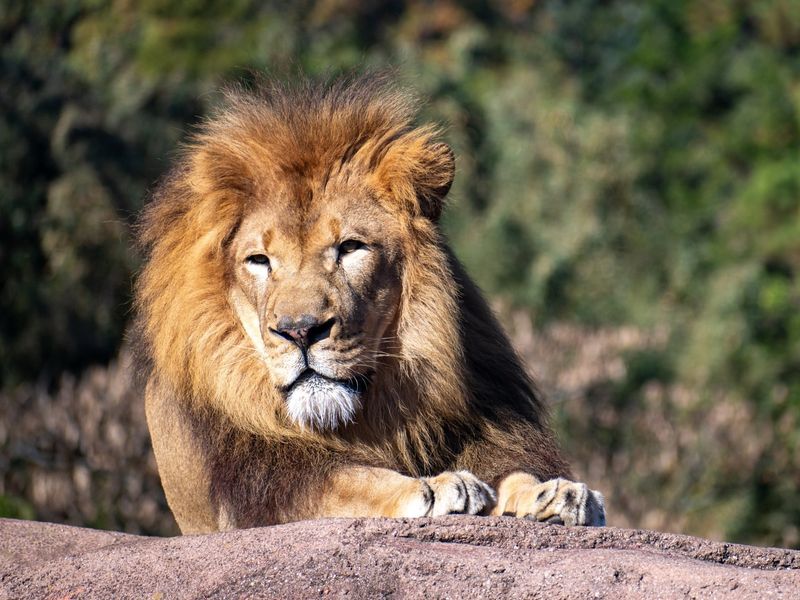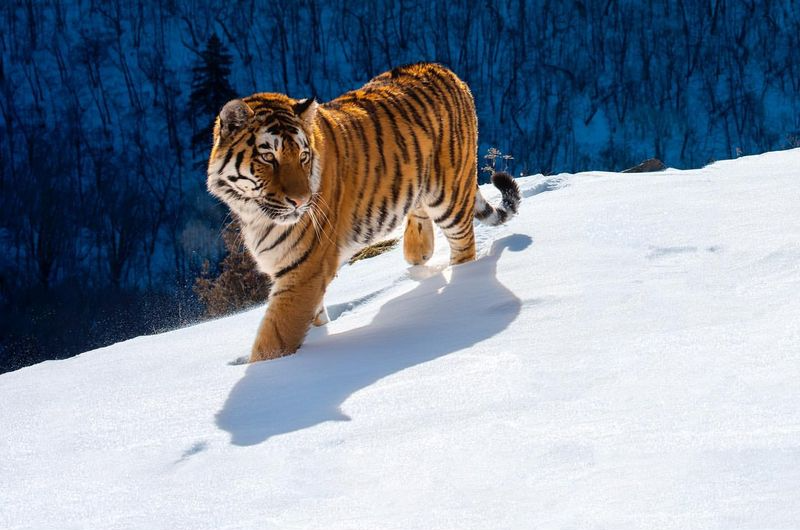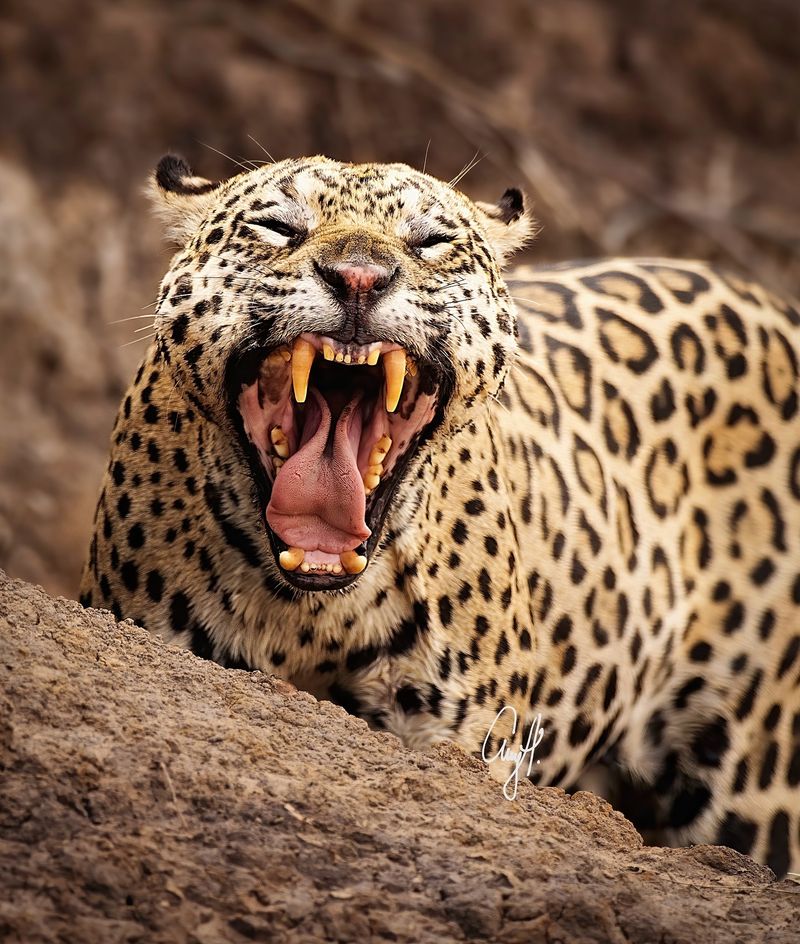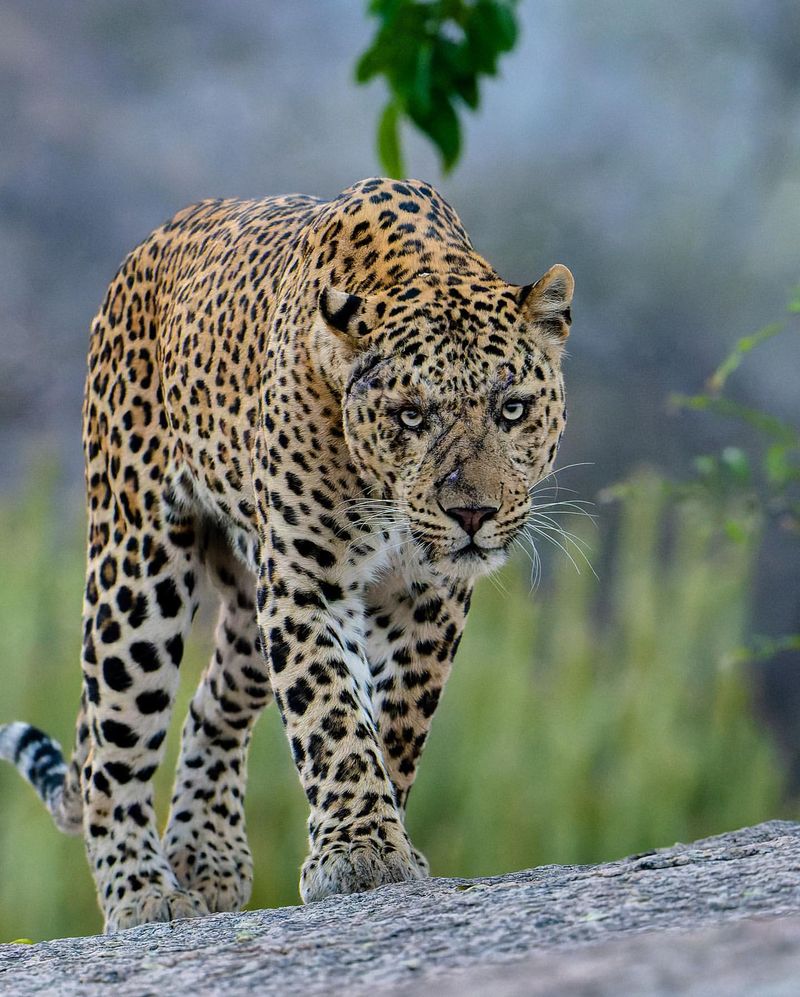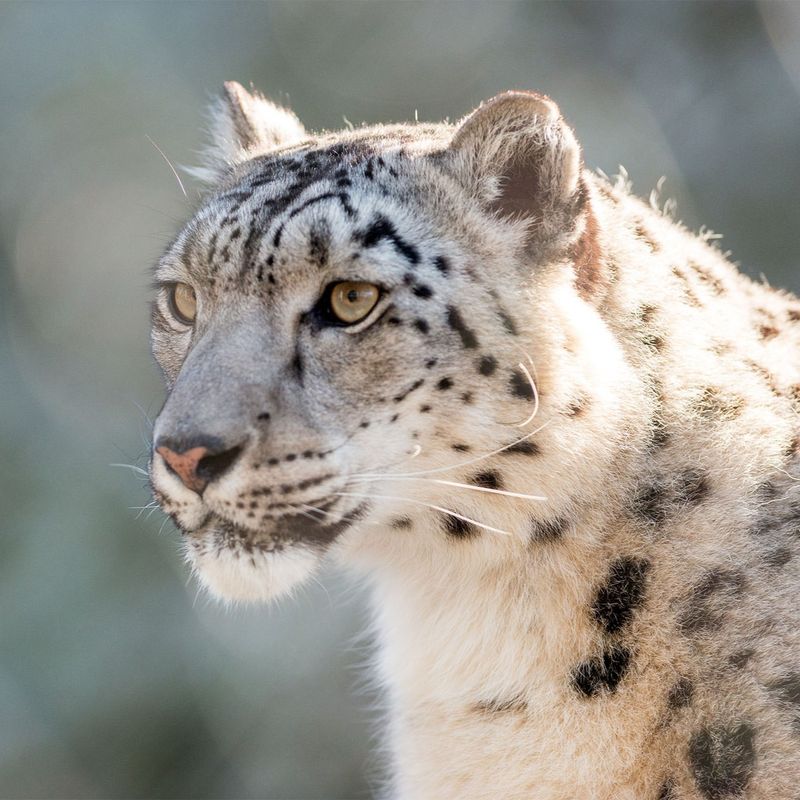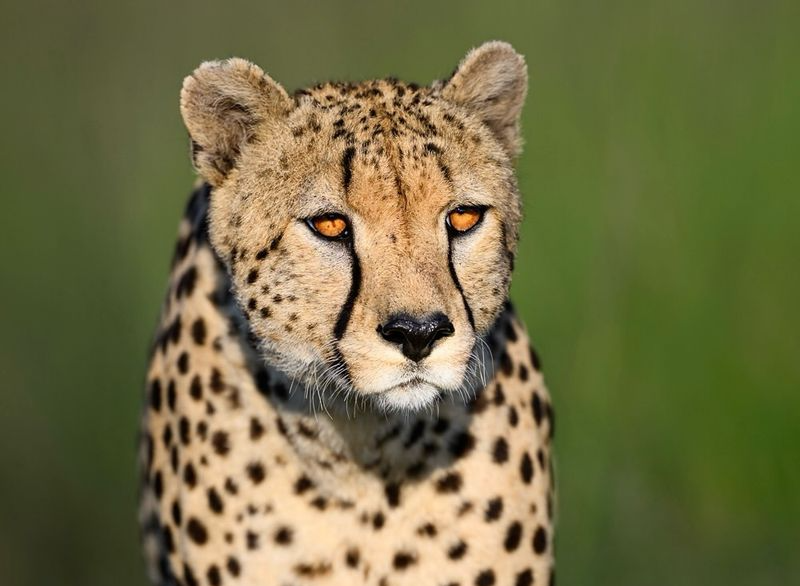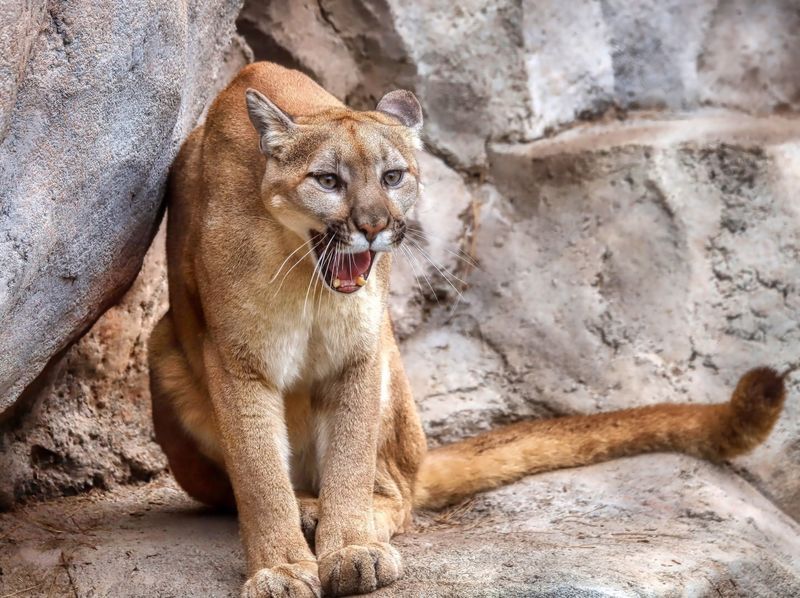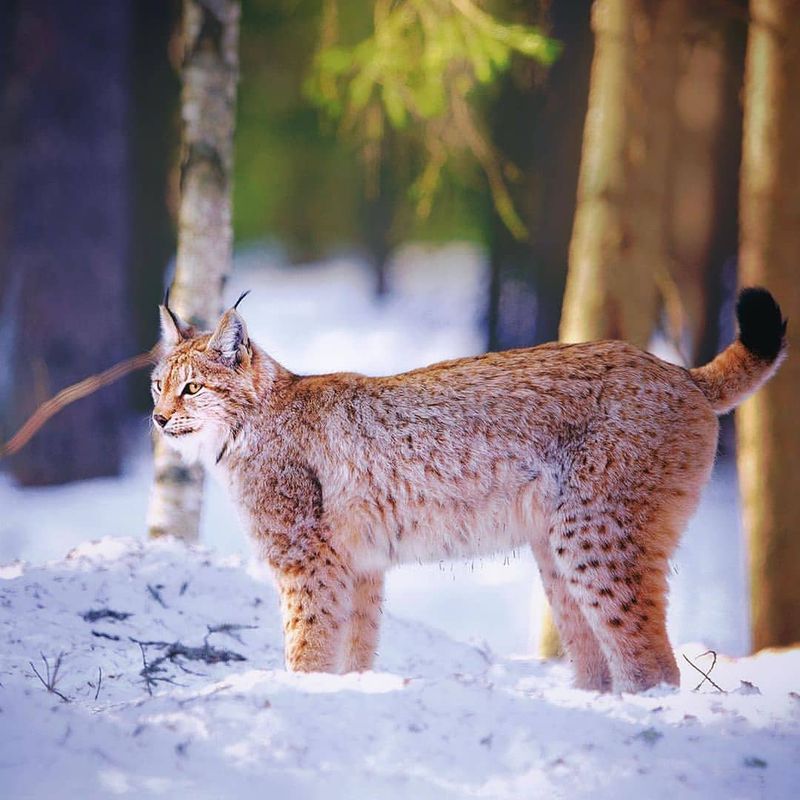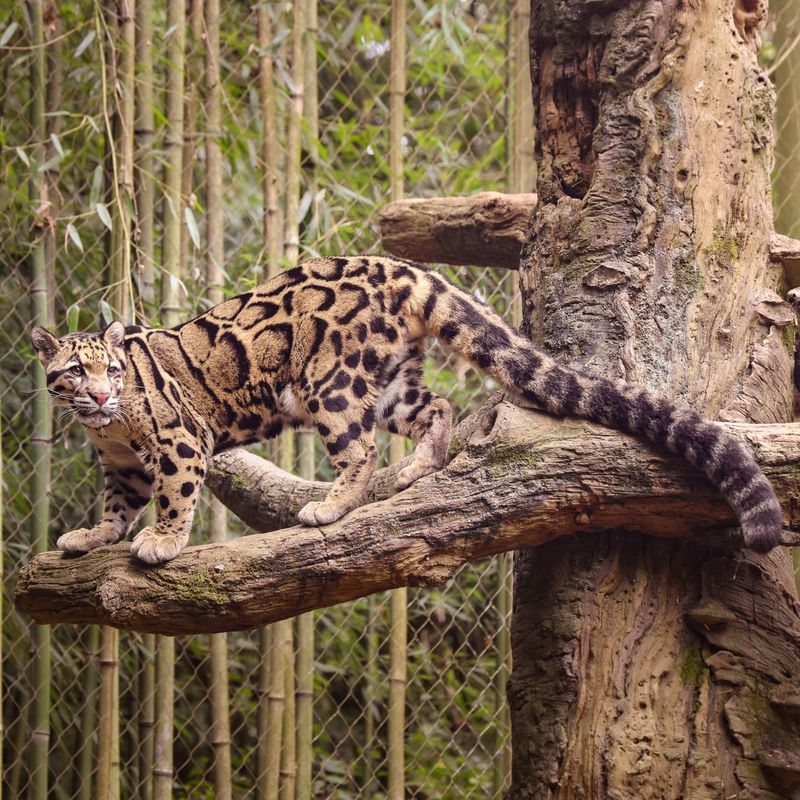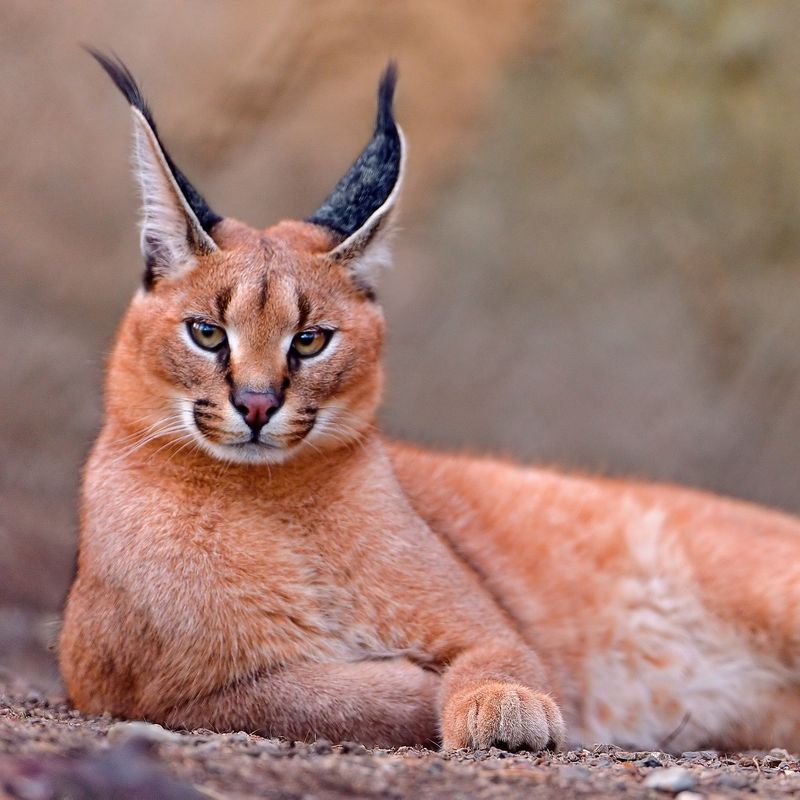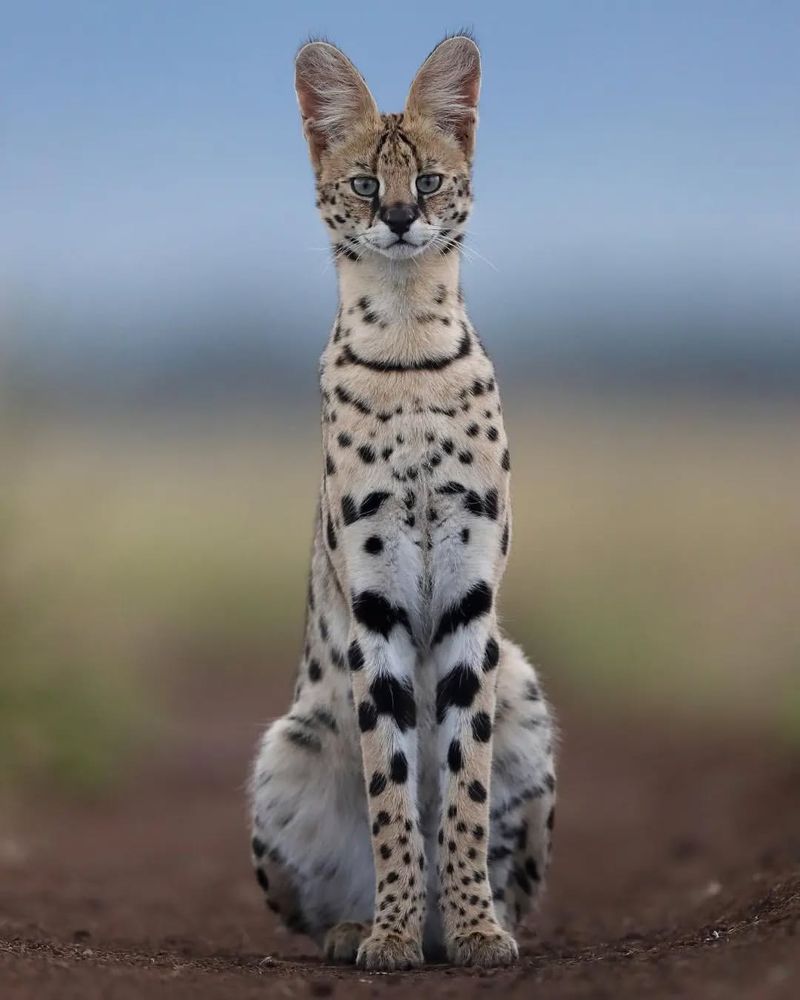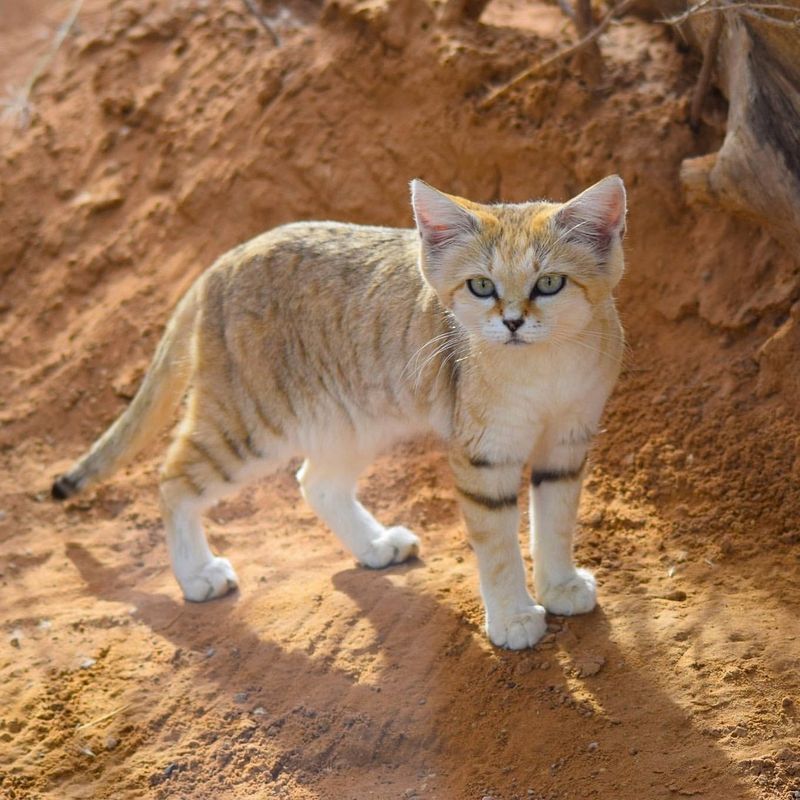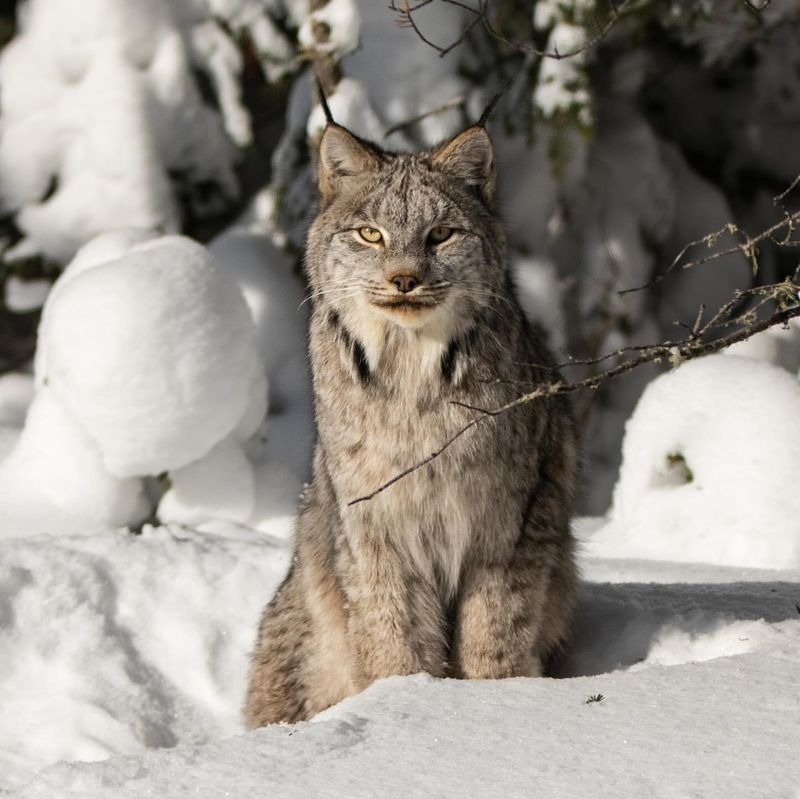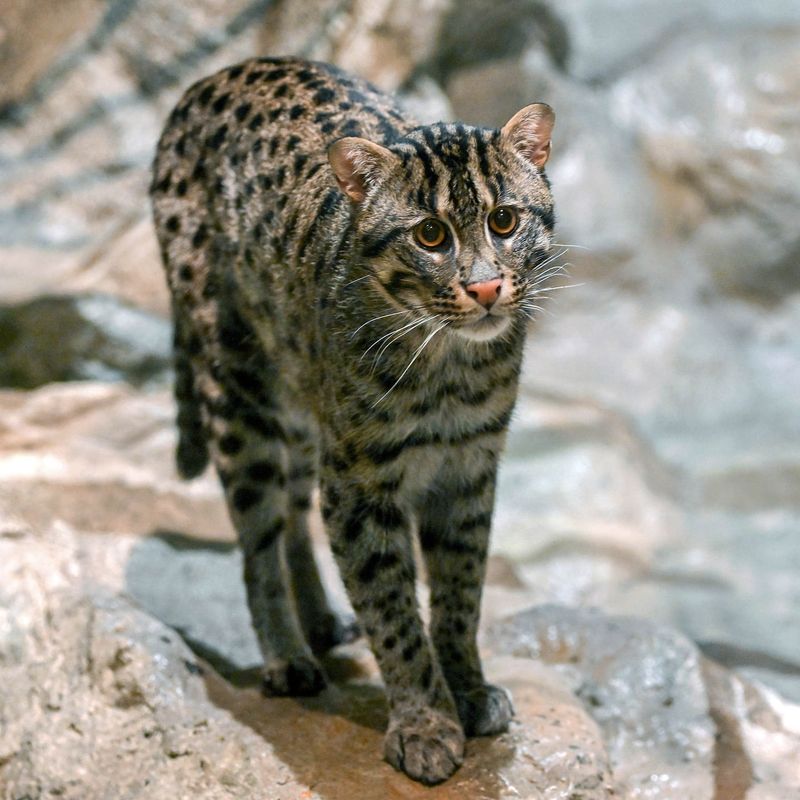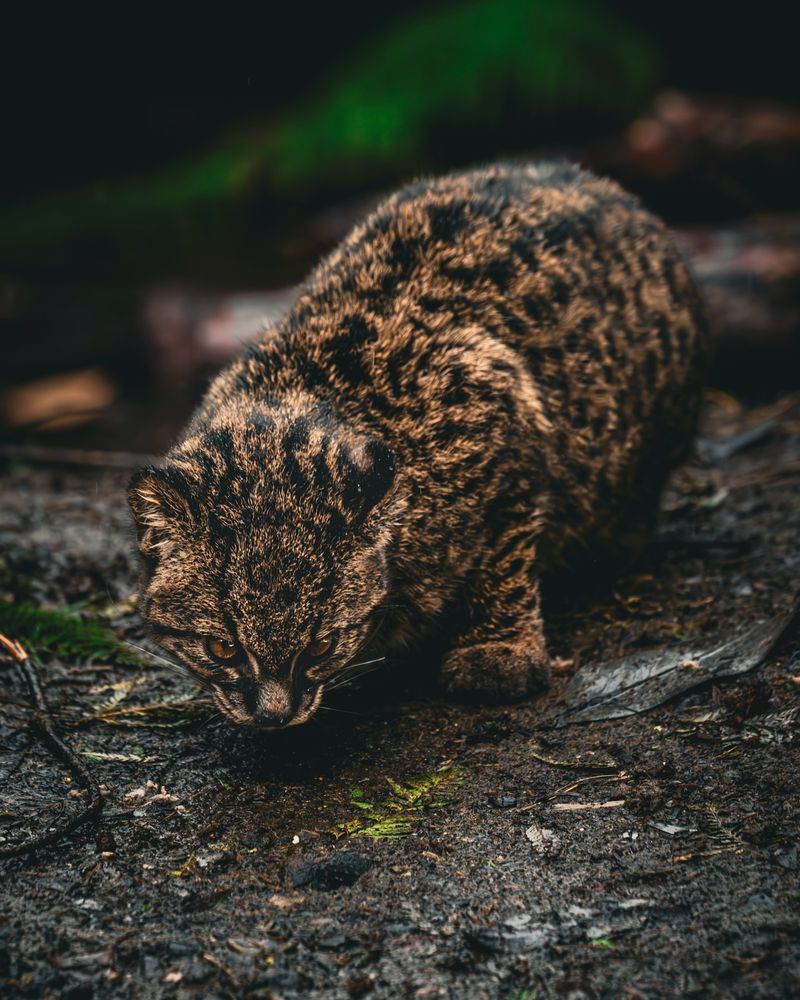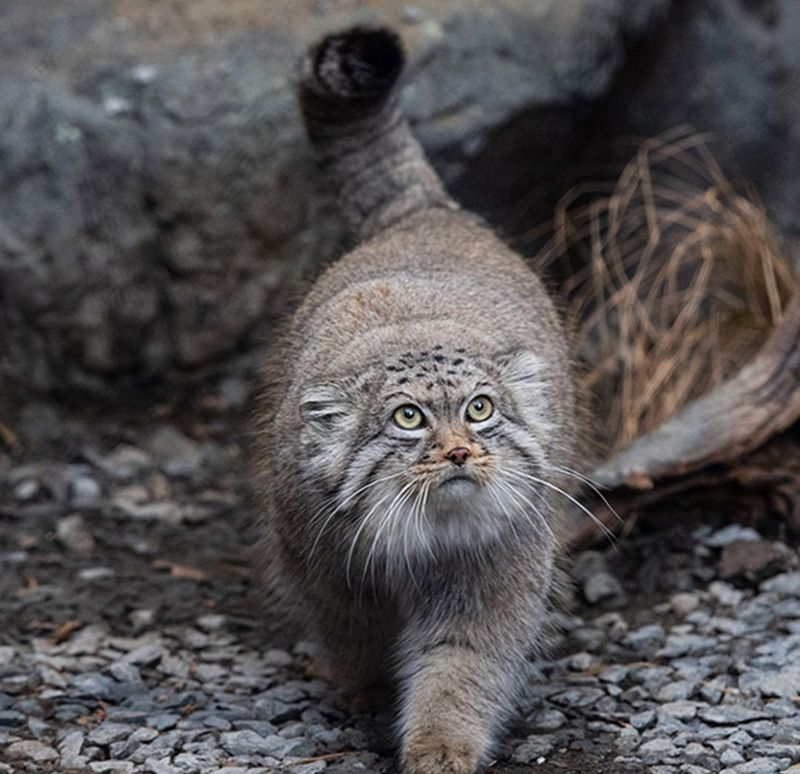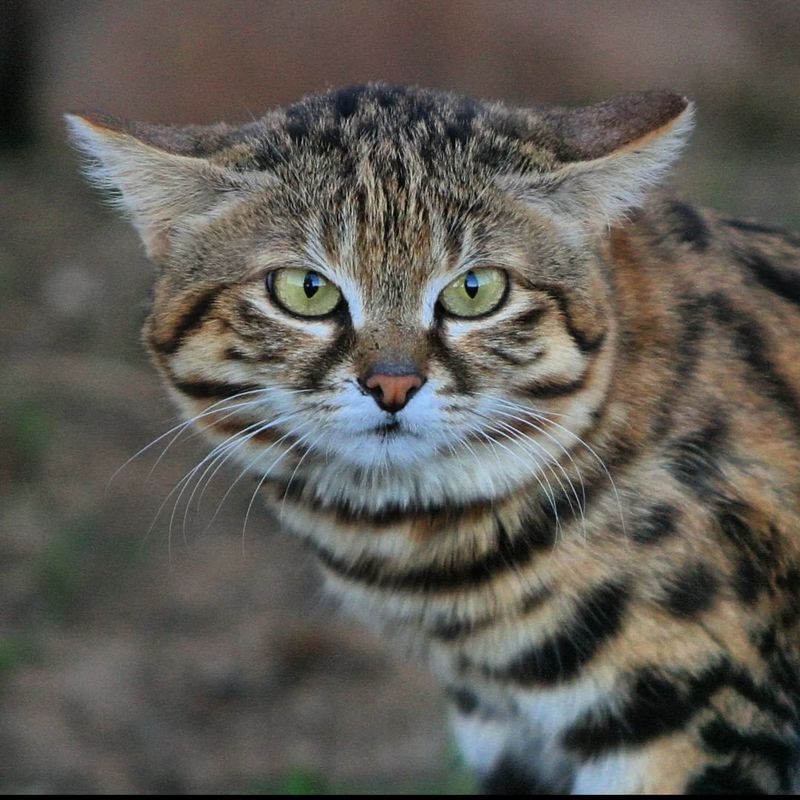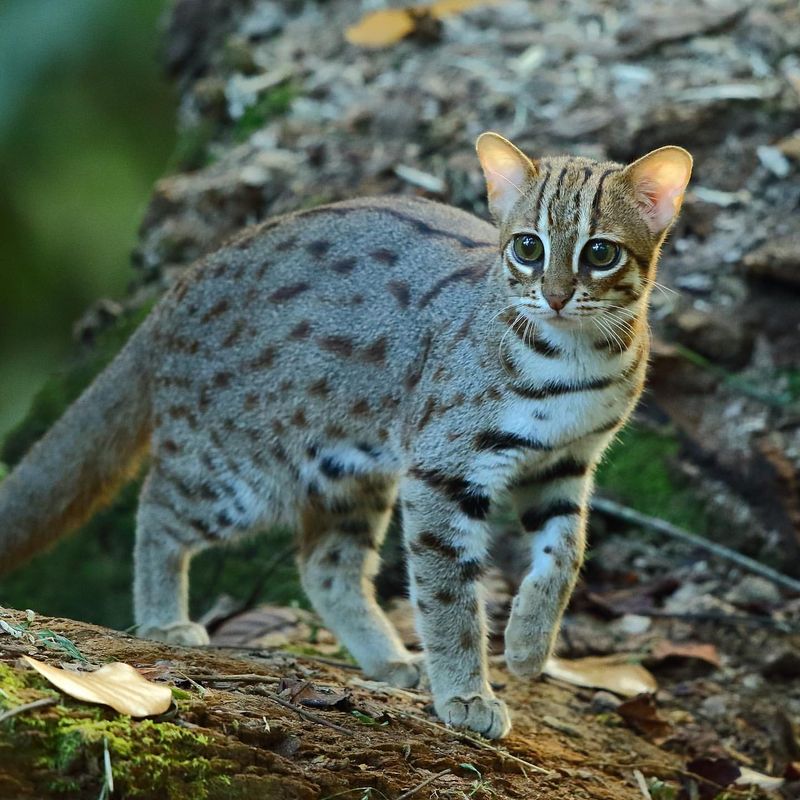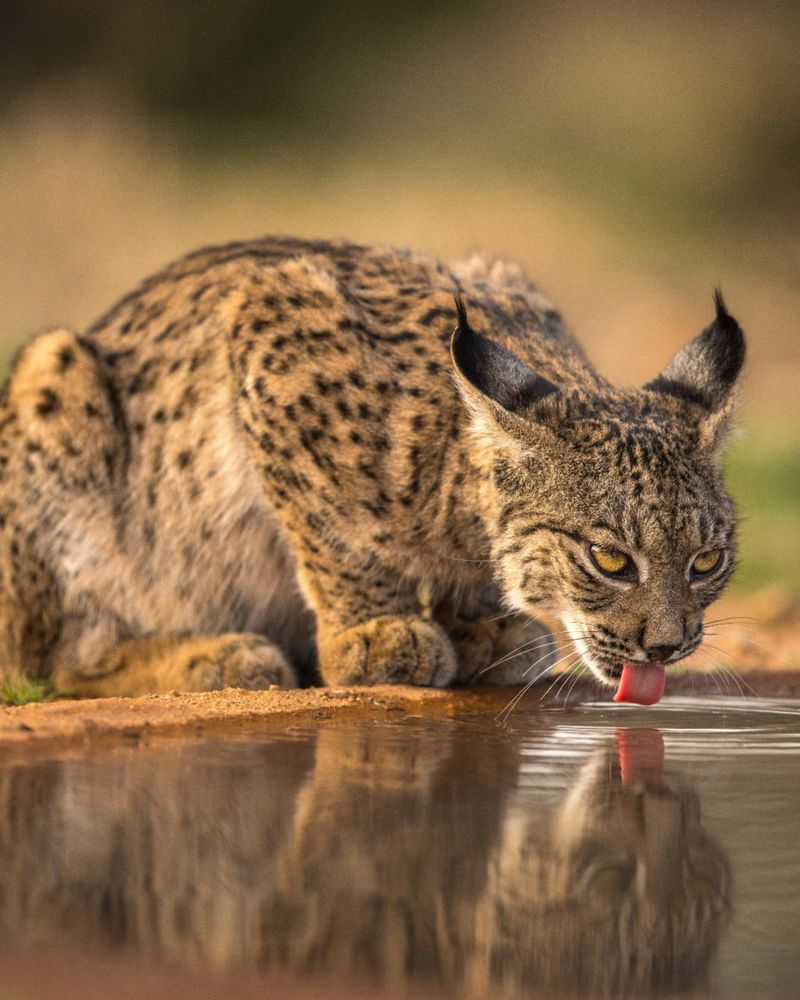📖 Table of Content:
- 1. Bengal Tiger
- 2. African Lion
- 3. Siberian Tiger
- 4. Jaguar
- 5. Leopard
- 6. Snow Leopard
- 7. Cheetah
- 8. Puma (Cougar)
- 9. Eurasian Lynx
- 10. Clouded Leopard
- 11. Caracal
- 12. Serval
- 13. Sand Cat
- 14. Canadian Lynx
- 15. Fishing Cat
- 16. Kodkod
- 17. Pallas’s Cat
- 18. Black-Footed Cat
- 19. Rusty-Spotted Cat
- 20. Iberian Lynx
The world of big cats is both mesmerizing and intimidating. From the dense jungles to the vast savannahs, these feline predators rule their habitats with grace and power.
This blog post delves into the characteristics and behaviors that make these cats some of the most formidable creatures on the planet.
With a focus on their hunting prowess, territorial nature, and survival instincts, we rank the 20 most dangerous cats in the world.
1. Bengal Tiger
The Bengal tiger isn’t just a big cat—it’s the king of stealth and raw power. Weighing up to 500 pounds and armed with 4-inch canines, this tiger doesn’t just hunt; it dominates.
Found in India and Bangladesh, these striped assassins have been known to stalk prey for hours, waiting for the perfect moment to strike. With a single paw swipe, they can break bones, and they’ve even been documented taking down full-grown elephants.
If you find yourself in tiger territory, don’t run. They love a good chase—and trust me, you won’t win.
2. African Lion
Lions may be known as the “kings of the jungle,” but they actually reign over savannas, where teamwork makes the kill work. Unlike their solitary tiger cousins, African lions hunt in coordinated groups, taking down anything from zebras to buffalos.
But don’t be fooled by their majestic manes—these felines are ruthless. Some lions even develop a taste for humans, like the infamous Tsavo Man-Eaters who devoured railway workers in Kenya.
Weighing up to 550 pounds, with a bite force strong enough to crush skulls, the African lion is nature’s version of an armored tank with teeth.
3. Siberian Tiger
The Siberian tiger, the largest of all cats, thrives in the frozen forests of Russia, where it silently prowls in search of deer, boar, and the occasional unlucky bear.
With a massive frame reaching up to 700 pounds, these titanic tigers don’t just kill—they obliterate. Their thick fur and powerful muscles make them the ultimate winter warriors, capable of taking down prey three times their size.
If you think winter is dangerous, try surviving with this apex predator lurking behind the trees.
4. Jaguar
Meet the jaguar, the Amazon’s ultimate predator and a cat that kills differently. While lions and tigers go for the throat, jaguars prefer a skull-crushing bite that pierces straight into the brain.
With the strongest bite force of any big cat, this spotted assassin can even crack turtle shells like potato chips.
They thrive in dense jungles and murky swamps, where they ambush prey with terrifying precision. If you hear a splash in the Amazon, it might not be a fish—it could be a jaguar diving in for its next meal.
5. Leopard
If you think you can hide from a leopard, think again. These golden-coated killers are the ninjas of the cat world—silent, deadly, and always watching.
Unlike lions, leopards don’t share their meals. They kill swiftly and hoist their prey up trees to keep scavengers away.
Even crocodiles aren’t safe—leopards have been known to ambush them at the water’s edge. Their spotted camouflage makes them nearly invisible, which means you’ll never see one coming…until it’s too late.
6. Snow Leopard
The snow leopard is as elusive as it is deadly. Living in the cold, rugged mountains of Central Asia, this feline is built for stealth and agility.
With thick fur, powerful legs, and an absurd ability to leap up to 50 feet, they navigate steep cliffs like parkour professionals.
Snow leopards rarely attack humans, but their ambush-style hunting makes them one of the deadliest cats in their domain. If you ever find yourself in the Himalayas, just know—you’re being watched.
7. Cheetah
The cheetah isn’t about brute strength; it’s all about speed. Capable of reaching 70 mph in just seconds, this slender, spotted cat is the ultimate sprinter.
While its lightweight frame doesn’t make it the strongest feline, it doesn’t need to be. With razor-sharp claws and an acceleration that would make sports cars jealous, cheetahs can chase down antelopes with ease.
If they set their sights on you, your only hope is that they’re not hungry.
8. Puma (Cougar)
Known as the mountain lion or cougar, this cat is North America’s silent nightmare. With an uncanny ability to blend into its environment, pumas stalk their prey with a patience that would make horror movie villains proud.
They’re ambush predators, launching themselves onto deer, elk, and sometimes even unsuspecting hikers.
Pumas can leap 18 feet straight up and take down animals twice their size—so if you ever hear a rustle in the woods, don’t assume it’s just the wind.
9. Eurasian Lynx
The Eurasian lynx is a cold-weather predator with a killer instinct. Found in dense forests across Europe and Asia, these medium-sized wildcats use their powerful limbs to pounce on prey with pinpoint accuracy.
Their tufted ears act like radar detectors, picking up the slightest movements. They might not be the largest on this list, but their stealth and striking speed make them formidable hunters.
Plus, with those piercing golden eyes, they look like something straight out of a folklore nightmare.
10. Clouded Leopard
The clouded leopard may look ethereal with its beautifully patterned coat, but don’t be fooled—it’s one of the most dangerous climbers in the cat kingdom.
Unlike other big cats, these agile hunters can hang upside down from trees and stalk their prey from above. They have the longest canine teeth relative to skull size, making them mini-sabertooths in modern times.
They move through the dense jungles of Southeast Asia with ghost-like stealth, proving that sometimes the deadliest threats come in the prettiest packages.
11. Caracal
The caracal is like a ninja in the cat world, known for its acrobatic hunting skills. This sleek, long-legged predator can leap 10 feet into the air to snatch birds mid-flight.
Found in Africa and parts of the Middle East, caracals are solitary hunters that rely on speed and precision to take down rodents, small antelopes, and even venomous snakes.
With their striking black ear tufts and intense gaze, these cats look like they belong in a fantasy novel—but their razor-sharp claws remind you they’re very much real.
12. Serval
Known for their large ears, servals possess exceptional hearing to locate prey hidden in tall grass.
Their hunting technique involves leaping high into the air to surprise and catch birds and rodents. These solitary cats are primarily active at dawn and dusk.
Though not endangered, servals face threats from habitat loss and hunting. Conservation initiatives aim to preserve their natural habitats and mitigate human-wildlife conflicts.
13. Sand Cat
Living in some of the harshest environments on Earth, the sand cat is a master of desert survival. With thickly furred paws to protect against scorching sand, these tiny but mighty hunters use their exceptional hearing to locate underground prey.
Though they may look adorable, sand cats are ruthless killers, known for taking down venomous snakes with lightning-fast reflexes. In the barren wilderness, they are silent, unseen assassins.
14. Canadian Lynx
The Canadian lynx thrives in the frigid forests of North America, where its massive, snowshoe-like paws allow it to move effortlessly across deep snow.
This stealthy hunter specializes in hunting snowshoe hares, but don’t let its exclusive diet fool you—lynxes are fierce and efficient predators.
With sharp retractable claws and excellent night vision, they navigate the frozen terrain with ghost-like silence, proving that size isn’t everything when it comes to survival.
15. Fishing Cat
Unlike most felines, the fishing cat isn’t afraid of water—in fact, it thrives in it. Found in the wetlands of South and Southeast Asia, these cats are expert swimmers, using their webbed paws to snatch fish, frogs, and even crustaceans.
Their ability to dive underwater to catch prey makes them a unique and formidable predator. Stealthy and patient, fishing cats blur the line between feline and aquatic assassin.
16. Kodkod
South America’s kodkod may be one of the smallest wildcats, but it is also one of the most fearless.
Found in the dense forests of Chile and Argentina, this elusive hunter has exceptional climbing skills, allowing it to ambush birds and small mammals from the treetops.
Despite their small stature, kodkods are known for their fierce territorial behavior, taking on larger rivals without hesitation. They are tiny but mighty warriors of the wild.
17. Pallas’s Cat
The Pallas’s cat might look like a grumpy, oversized furball, but beneath its thick coat lies a formidable predator.
Found in the high-altitude regions of Central Asia, these stocky felines have the densest fur of any wildcat, keeping them warm in freezing conditions.
Their low metabolic rate allows them to conserve energy while ambushing unsuspecting prey. Though they may look adorable, their aggressive nature and razor-sharp claws remind you that they are wild at heart.
18. Black-Footed Cat
Don’t let its size fool you—the black-footed cat is statistically the most successful feline hunter in the world.
This tiny African wildcat has an astonishing kill rate, taking down small prey with a success rate of nearly 60%.
Their small bodies require them to eat constantly, meaning they hunt almost non-stop throughout the night. Pound for pound, this is the deadliest cat on the planet.
19. Rusty-Spotted Cat
The rusty-spotted cat is the smallest wildcat species in the world, but what it lacks in size, it makes up for in ferocity.
Found in India and Sri Lanka, this feline is a nocturnal hunter, relying on its agility and stealth to snatch up rodents, birds, and reptiles.
With its lightning-fast reflexes and ability to climb trees with ease, the rusty-spotted cat is a pint-sized predator with an outsized reputation.
20. Iberian Lynx
Once on the brink of extinction, the Iberian lynx has made a stunning comeback thanks to conservation efforts.
Native to Spain and Portugal, this spotted feline is a master ambush predator, specializing in hunting rabbits with lethal efficiency.
With a powerful bite and razor-sharp claws, the Iberian lynx is a reminder that nature’s top predators, no matter their size, should never be underestimated.
